
LBB Film Club: Mary DeBoutez Zellmer Fenoglio
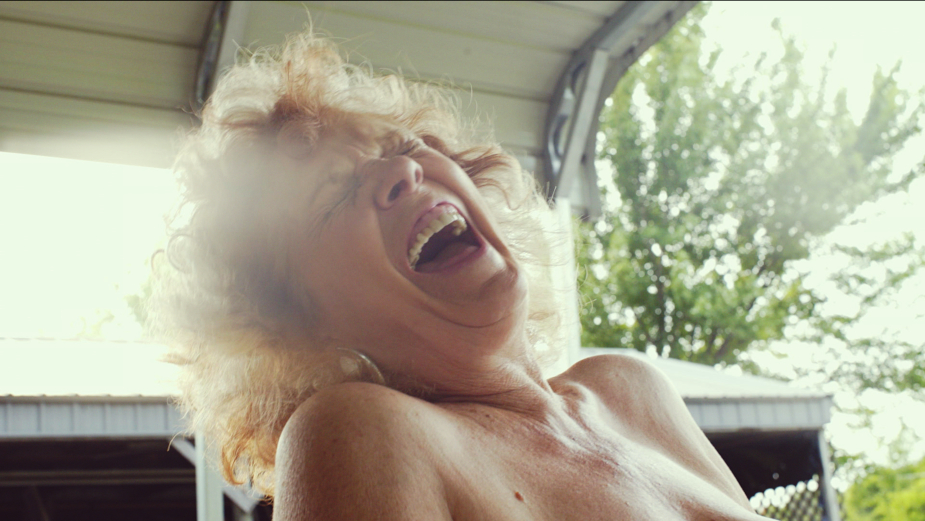
When Sam Huntley took a wrong turn in rural Kansas, he didn’t guess it would lead to a 16-year intergenerational friendship and a feature-length portrait of a woman unlike any other.
Mary DeBoutez Zellmer Fenoglio is the name of both the person and the film. A loud, charismatic and complex woman in her sixties, born and raised in rural Kansas, USA. She has dreams of becoming an artist and one day leaving Kansas.
Living with her husband and surrounded by her clowder of cats, Mary runs a vibrant roadside curiosity shop out of her front yard and builds giant eye-catching furniture. But rising gas prices have caused business to slump.
We encounter Mary’s friends, neighbours and close-knit family and learn about events that have shaped her life: the poverty of her upbringing, the death of her baby son, a domineering ex-husband and the effects of an abusive father. Yet against these odds she remains positive, energetic and hopeful.
Ten years later, we return to find Mary struggling to come to terms with what’s happened in her life in the intervening years. Her beloved husband Kenny has died, as well as her brother and sister, and her business has all but ceased to exist. Just when she’s at her lowest ebb, she’s introduced to Rusty, a local contractor, and the possibility of a new relationship gives her a glimpse of happiness that she thought had gone forever.
LBB’s Alex Reeves caught up with Sam to hear about the gigantic role the film has played in his life and career.
LBB> When did you first meet Mary? What were your first impressions?
Sam> I first met Mary back in 2006. I was doing a road trip across the States with a friend, driving from NYC to San Francisco. We got lost in Kansas – I think we were looking for this little town that had built a replica Yellow Brick Road from ‘The Wizard of Oz’ in a warehouse – and we drove past Mary’s property.
It was quite an imposing sight, with a 20-foot Welsh dresser, and a huge stove out front by the gates, with all the surrounding fencing covered in an array of crazy stuff: weird dolls, baby strollers, tonnes of old rusted stuff, with huge piles of old wood covering the ground. We pulled over and just sat in the car for ages trying to work out what it was. Then we saw Mary coming out of one of the outbuildings, with this wild mane of blonde hair, wearing dungarees and carrying a massive ladder over her shoulder. She was barking instructions in her thick Kansas accent at a herd of cats that were following loyally behind her, and we were just totally mesmerised!
We sat there for way too long trying to get the courage up to go and talk to her… eventually we did and Mary met us with a typical “what the fuck d’you want?!”. She doesn’t meet that many people from London in rural Kansas though so I think she immediately relaxed when she heard our accents and was intrigued as to why we seemed to be so interested in her. We ended up spending a few hours hanging out with her, looking at all the amazing junk lying around the place, and getting a tour of the big curiosity shop she runs out of her front yard, which is packed full of incredible collectables that she has spent a lifetime amassing.
Then we spent a bit of time taking photos of her sat on top of ‘Big Bertha’ the giant 20-foot Welsh dresser she built singlehandedly to try and entice customers into her shop, whilst she shouted excitedly at Kenny, her watching husband, again expressing her amazement at why anyone would be interested in photographing her. When we eventually, reluctantly, had to leave that afternoon I remember feeling a real sense of crushing disappointment at having to leave this amazing woman I’d just met behind.
My first impressions of Mary were that she was one of the funniest, most interesting and charismatic people I’d ever met, and, over the course of the rest of our trip all I could think about was this crazy woman in Kansas!
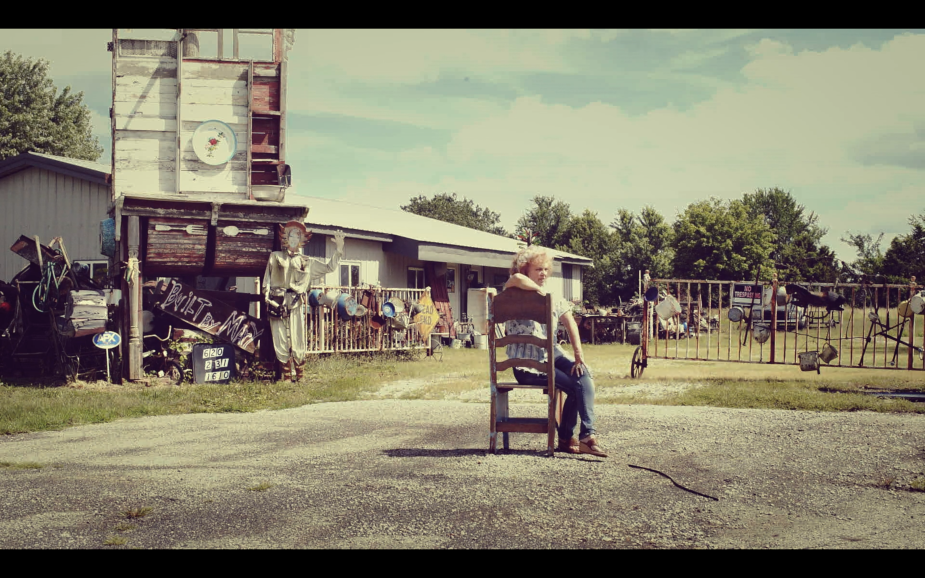
LBB> And when did you decide you wanted to make a film about her?
Sam> Pretty much straight away… As we drove away from the property that first time I turned to my friend and said I have to make a film about her! I think part of the reason I felt a bit dejected at that point was that I probably felt it was a bit of an unrealistic pipe dream, that it would never happen for one reason or another… I knew it could be good but it was probably unachievable.
Then for the next couple of years I couldn’t stop thinking about it so I decided to try and get in touch with Mary and sound her out about the possibility of doing something. When we left her that day, she’d given me a phone number, but – after I’d finally plucked up the courage to call her – for some reason it didn’t work. I was gutted and thought that would be the end of it, but I did a bit of googling and luckily found an article about her in the local paper in Pittsburg, where Mary lives. So I got in touch with the journalist who’d written it and told her I was trying to contact Mary, so she went out to Mary’s place for me and got me the correct number.
When I eventually managed to speak to Mary again I was worried she wouldn’t even remember who I was but luckily she did – although it was still a bit of a hard sell getting her to agree to let some random bloke she’d met for a couple of hours, two years ago come over from London to make a film about her! She was a bit unsure at first, and I think her family were, understandably, a bit reticent too. But eventually her husband Kenny encouraged her to do it.
So thankfully things moved pretty quickly after that, I got some gear together and flew over there. The moment when I turned up at her door again was pretty surreal though – despite all the talking and phone calls we did beforehand, I don’t think she thought I’d actually turn up until the moment I did. But luckily we just totally hit it off…

LBB> What was the filming process like? It's shot over a long time-frame. How did the interviewing/shooting sessions work?
Sam> It was amazing. The first time I went over it was all really relaxed; we just hung out every day, getting to know each other and having a laugh. Some days we wouldn’t shoot anything, but I’d slowly get ideas for stuff I wanted to shoot or things I wanted to explore as I was talking to her.
I was essentially interested in the details of her life, which I think she found a bit strange at first. So we’d end up spending loads of time shooting her doing the washing up or feeding all her cats, hanging out at her shop, trying on hats, being silly… most days Kenny would come home from work and we’d be in the middle of shooting some random thing and he’d be like “what the fuck are you two up to today?!”.
That approach continued really for the entirety of the time I was filming with her. Shooting someone over a ten year period is quite a strange scenario, because so much changes in that time. Mary had changed – she’d grown older, although she was still the same young-at-heart hell raiser she’d always been! Things in her life had changed… I had also changed; I was more experienced as a filmmaker, my visual style had evolved, I was shooting on different cameras… so all these things brought added complexities to an already complicated set-up, but you just have to roll with it and see where it takes you.
Ultimately though, the one thing that never changed was the dynamic between myself and Mary. Over the many years between filming we always kept in touch, and to this day we still message each other regularly. Mary’s 30 odd years older than me, we come from totally different places in one sense, but we’ve got a similar sense of humour so we just got on really well and I think that helped to build a trust between us which definitely then filtered through to the filming process.
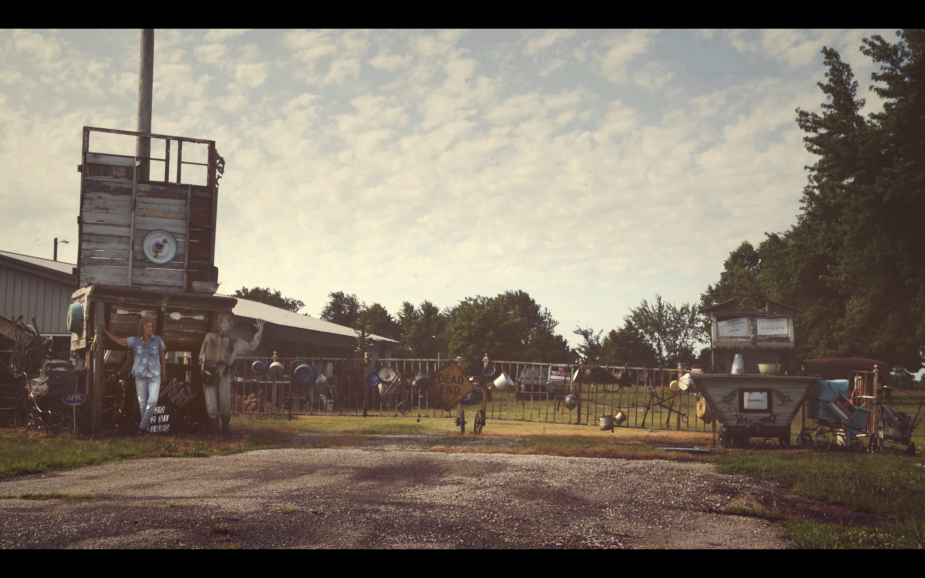
LBB> How did you find a way to give the film some structure and shape?
Sam> I’m the kind of director that likes there to be a degree of uncertainty when I’m shooting something – I like to see how things play out, without being too prescriptive about what I’m doing. Even when I’m shooting a commercial, I like to have an element of surprise or spontaneity on the day, letting actors try stuff, not being tied to a storyboard etc… and I think this is especially true when shooting a documentary. I didn’t want to use talking head type set-ups, interviewing Mary and just having her talk about stuff from her past. Very often I’d just start throwing questions at her whilst she was doing something unrelated and see what she would come out with, and that might just naturally lead into her telling a story or recounting a memory.
Originally when we started filming I saw the story as very much being ‘Mary in her home environment’ so most of the stuff we shot was just her hanging out at home with the cats, or in the yard, or the shop - waiting for a customer to come in. A lot of the footage was ‘reactive’, following her around, and mostly on her own. When I went back 10 years later, I felt like the story had moved beyond the boundaries of her home, so there’s a lot more scenes of her with other people; be it family or old friends or people in the community. For these scenes I would very often just set the camera up in a wide and leave it running and just capture whatever they were talking about, and out of each scene I would find something in the edit that I felt said something narratively about Mary, or her relationships, or outlook on life.
I guess this was a slightly riskier approach because you’re leaving it to chance to an extent that you’re going to find something in the edit that’s going to be relevant to ‘the story’ you’re trying to tell (it also made the edit a lot harder!). I also didn’t shoot any coverage for these scenes, so there was nothing to cut to if I needed to shorten a scene or change the pace of it etc. But actually I feel like this change of approach worked quite well in the finished film, and it’s a good example of how you have to adapt your style sometimes to suit the needs of an individual project.
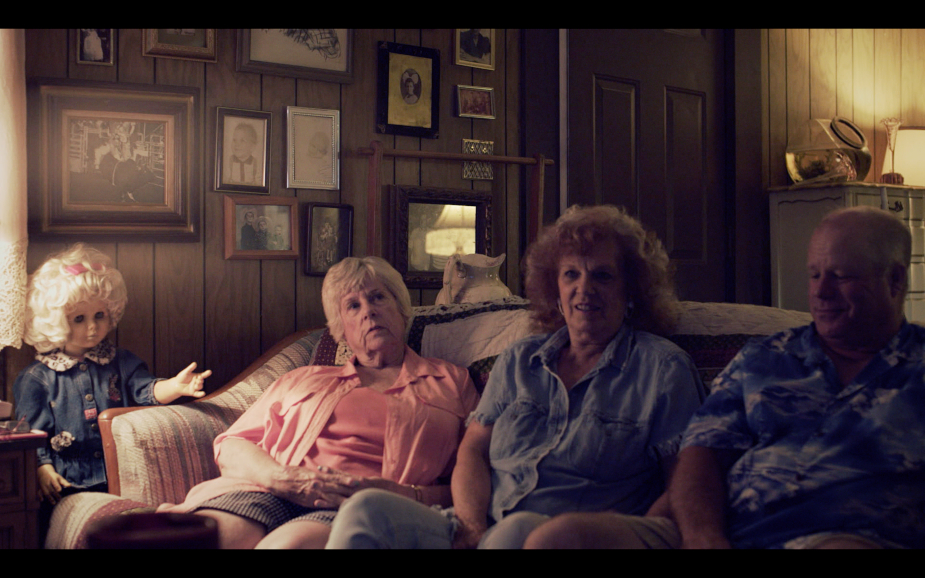
LBB> How did you capture the emotional parts? It must have felt difficult getting Mary to re-live those sad experiences on camera.
Sam> With any documentary projects, trust between you and the subject is one of the most important things, so I think the fact that we’d developed such a strong bond over time really helped when it came to the more emotional parts. Mary is someone who in some way has been ‘waiting to be discovered’ her whole life, so the fact that she knew I was so intrigued by her and her life made her feel comfortable to talk about more difficult subjects.
When someone discusses really personal issues,they have to feel confident that you’re going to tell their story in a sensitive, non-manipulative way. Mary wears her heart on her sleeve – she really lays it all out there – so I think she just trusted that I would tell it in the right way. I’ve got the utmost respect for her and what she’s been through in her life, and how she continues to battle through it, and I hope that comes across in the film.
In terms of whether it was difficult getting her to re-live those experiences on camera, it was for sure. Seeing anybody breaking down or getting emotional is always difficult, but especially when you’re standing watching them from behind a camera. The temptation is always to stop or intervene. But I guess that’s a constant judgement you have to make when you’re making a documentary… you have to consider the person in that specific moment and make the right call. If I’m being totally honest, you’re also weighing up in that moment how the footage might affect or benefit the film you’re making, but again that’s all part of the balancing act.
Again, because I filmed over such a long period with Mary I developed a pretty good instinct as to when to push things and when to back off – and a lot of the time for her I think it was a kind of cathartic experience, and probably helped her to get stuff out that she’d been bottling up for years and years. What was interesting with her as well was that the emotion she felt about certain subjects – especially anything to do with her family - never changed or lessened over time. She could tell the same story ten years apart, and it would still elicit the exact same emotional response, and that’s always a sign to me that someone is completely genuine in what they’re saying.

LBB> At what point did a narrative start to emerge and how did that general arc of the film change shape?
Sam> When a film is predominantly a portrait of someone and their life, there’s many potential ways to tell a story, so it’s difficult to pinpoint a particular moment when it started to ‘emerge’, even more so when you’re shooting someone over a long period of time.
There was also various ‘strands’ I was exploring at the same time, both in the present day and the past; observing Mary in her day to day life, her relationship with her family, interactions with people that came into her shop… as well as her looking back to her childhood, the poverty she was born into, her relationship with her dad and how that’s affected her whole life, the death of her mum which had a huge impact on her. So for quite a long time I was just following whatever I happened to be interested in at the time.
Tonally the film also shifts back and forth between really funny stuff (as I said Mary is one of the funniest, sharpest people I’ve ever met), tender, sweet moments, and more emotionally charged scenes, so trying to balance those tonal shifts was a constant consideration.
But I think an arc of sorts started to naturally evolve in the later footage I shot with her after 10 years, because it became very much about the passing of time and her reacting to things that had happened in her life, ever since we started filming. So that sense of reflection and nostalgia became more and more prevalent.
It was definitely interesting comparing the footage I shot years ago with anything more recent, and looking for any subtle changes in Mary’s behaviour or personality, any nuances that had developed, any interesting contrasts in the way she felt about certain things. But despite all the ups and downs and hardships that Mary had been through in her life, she remained incredibly resilient, so as well as looking back, a lot of the film also became about facing the future and seeing what comes next.
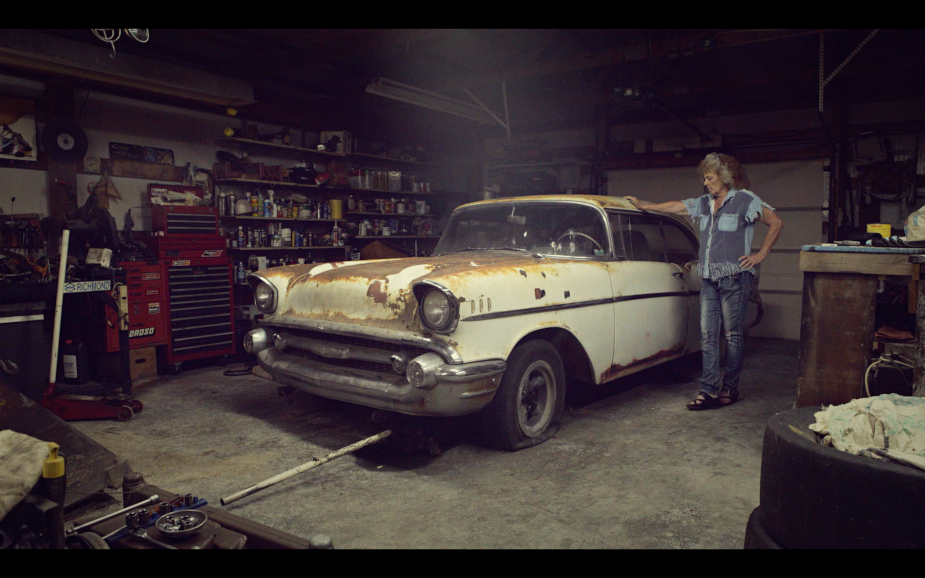
LBB> How much of the decision making happened in the edit and what was that part of the filmmaking experience like?
Sam> A lot. As I said there were so many different strands that I was following so the edit was really tough, trying to decide what to keep in and how to keep it flowing in a coherent manner without it feeling too formulaic. I never intended for it to have an obvious narrative structure or arc, but equally I didn’t want it to be just a collection of vignettes. I was trying to build a picture of this incredible woman’s life, so it’s a bit like fitting together a patchwork of memories, stories, humour and heartbreak that you can navigate through any number of ways. It was quite a task.
I love editing, it’s probably my favourite part of the filmmaking process. Having the time to experiment and try different things out after the pressures and unpredictability of shooting, especially with a project like this that was shot over such a long time. But this was definitely a real challenge for a variety of reasons. I obviously had a lot of footage, and there were any number of ways it could’ve been cut. I also ended up cutting it myself. I’d wasted a lot of time waiting for the production company I was with at the time to fulfil promises they’d made, so in the end I decided that no one knew the footage (or Mary) as well as me so I decided to take it on myself.
This unfortunately coincided with having a baby and then the pandemic, so it was really tough finding the time and the energy to keep the momentum going with it. It was certainly a relief to get the cut finished – although also a bit scary as I hadn’t really had any input from anyone throughout the whole process apart from my partner Charlotte so it was fairly nerve-wracking having to show anyone for the first time!
LBB> What was the best part of making the film?
Sam> The whole process has been equally rewarding so it’s hard to pick a favourite moment. I feel really proud to have seen it through, from taking a wrong turn in rural Kansas in 2006 to finally having a finished feature length documentary to show for it – it’s been quite a journey, with a lot of ups and downs in between.
I shot, cut and self funded the whole film so it’s been a proper undertaking. I’ve definitely learnt a lot along the way, which has undoubtedly made me a better filmmaker. There’s been loads of times even when I’ve been shooting a commercial where I’ve instinctively lent on something I learned along the way whilst making the film, times when I may have felt daunted by something and I’ve had to remind myself that I’ve spent all these years making this film, in the middle of nowhere in Kansas, integrating with different people and making friends along the way, so that’s definitely been a highlight.
I’ve also developed working relationships with people that came directly from them offering to help me out with the film all those years ago; people like Ben Rogers (Gramercy Park Studios), amazing colourist who has helped me out so many times over the years, not least with this film. And Joe Mount, my sound designer who’s done so much work for me over this time – I could never have got the film finished without those two especially.
But meeting Mary has definitely been the best bit. We’ve had so much fun together over the years, it’s been a real adventure. I think she’s a real inspiration and example for anyone that no matter how much shit life throws at you, you just have to keep going – if not for yourself then for the people around you that rely on you, and that’s what she's done her whole life.
LBB> Where will people be able to watch the film? And what frame of mind would you like them to approach it in?
Sam> At the moment it’s hopefully due to play at a few festivals later in the year, and then it might be more readily available online after that. But if anyone’s especially keen to watch it in the meantime I might be able to sort out a private link if they give me a shout through my website: www.samhuntley.com
In terms of what frame of mind I want people to approach it in; I’d like people to just enjoy spending time in Mary’s world, as I have for the last 16 years! It’s a fun place to be.














